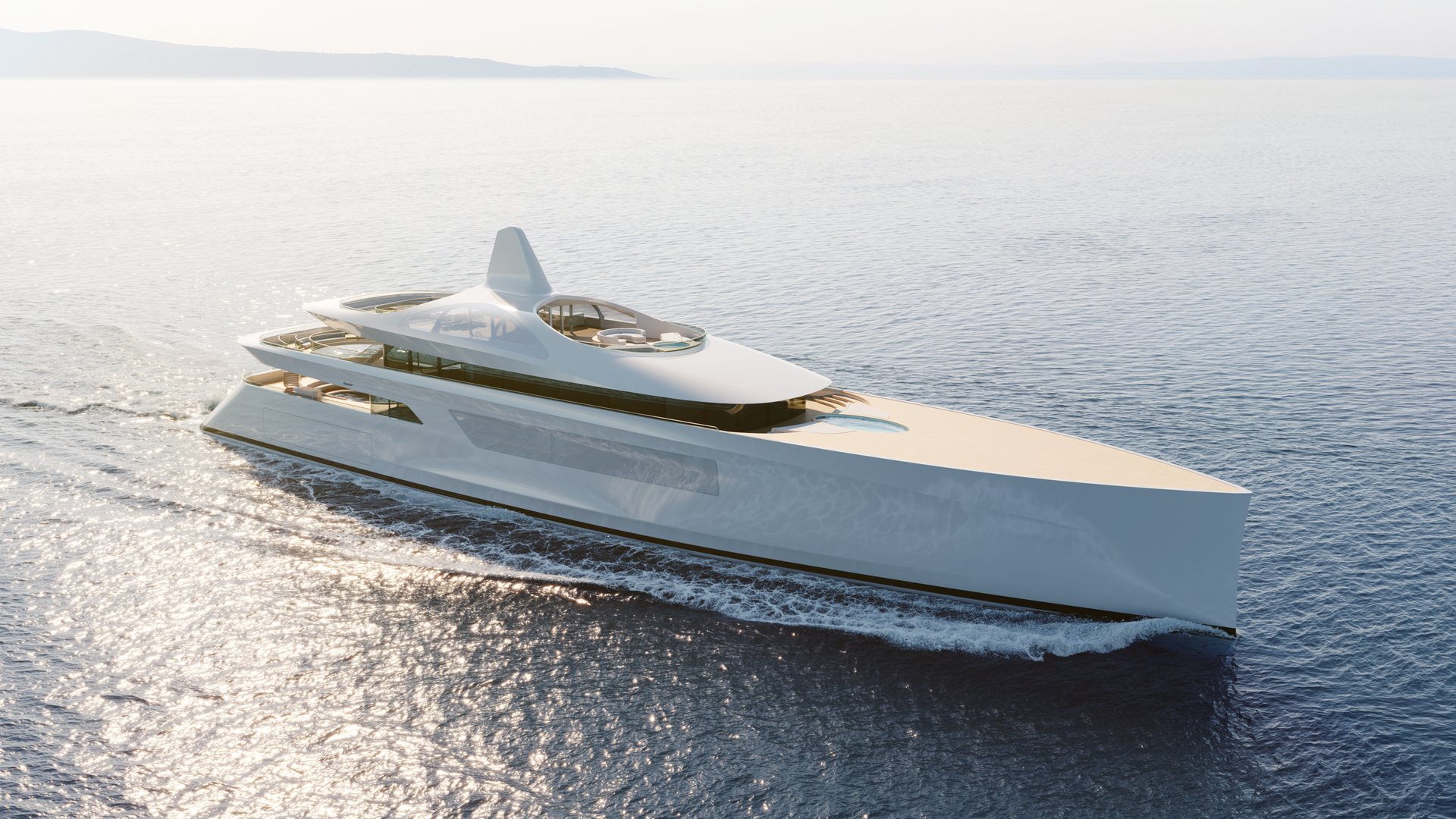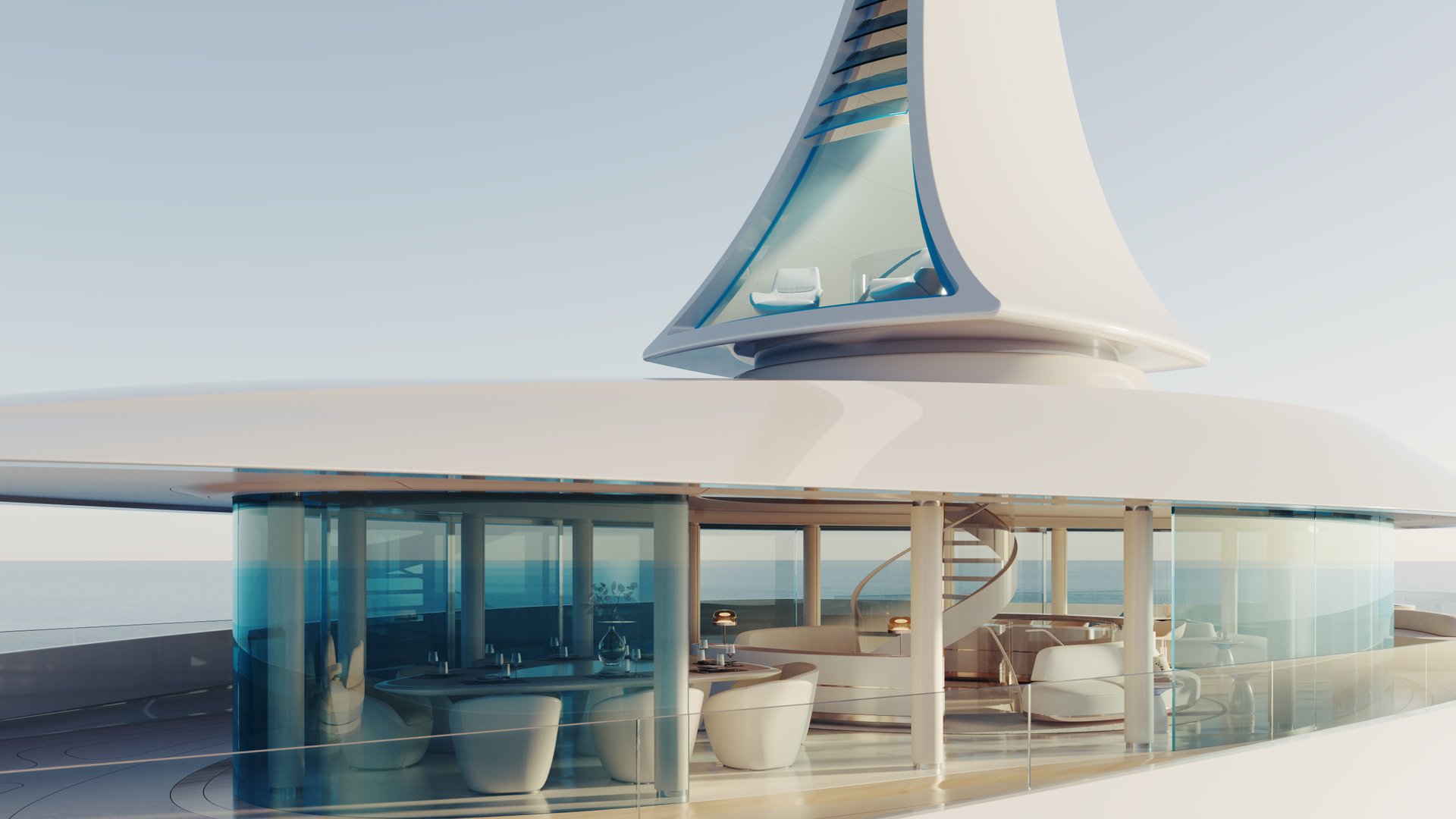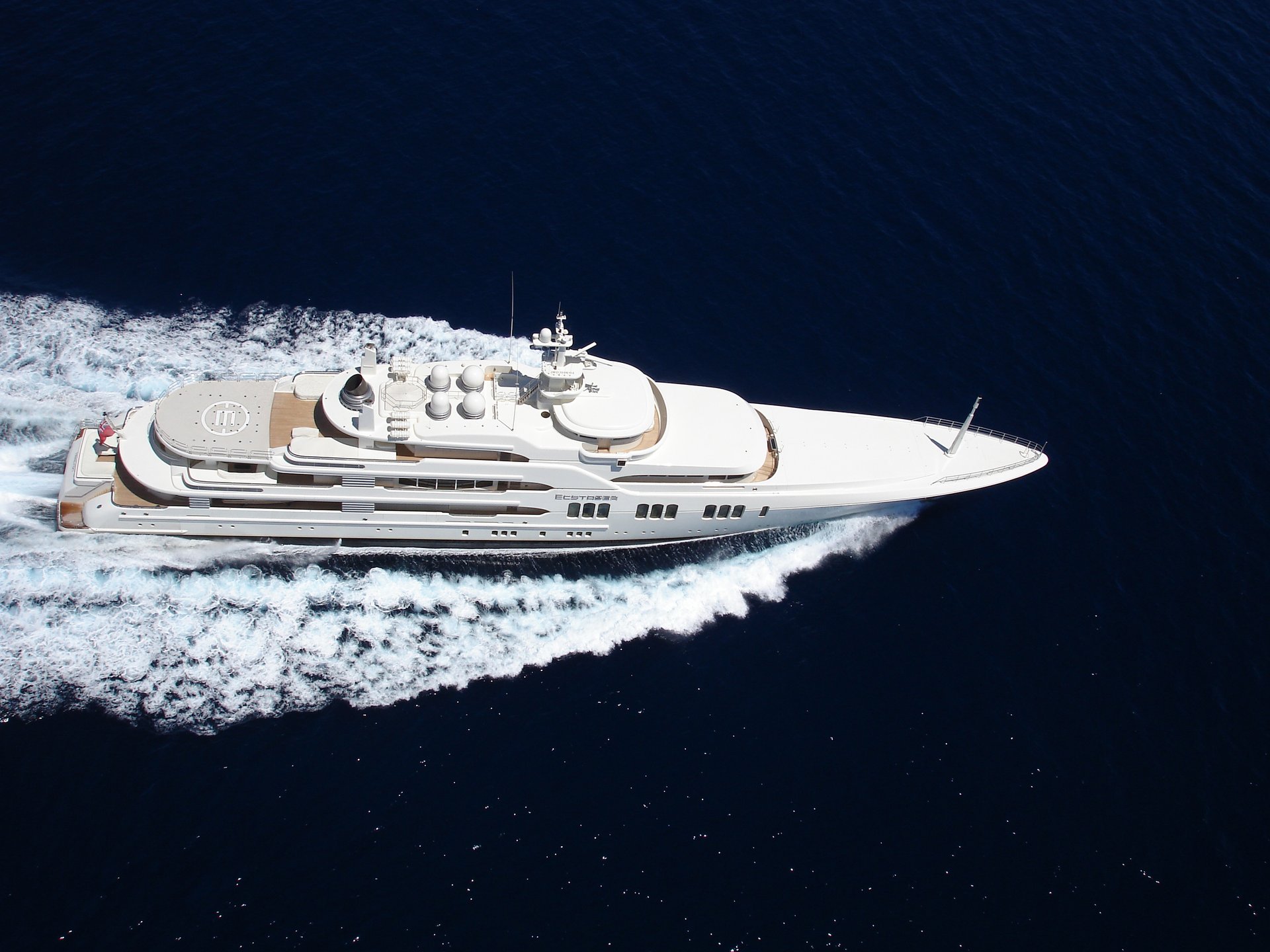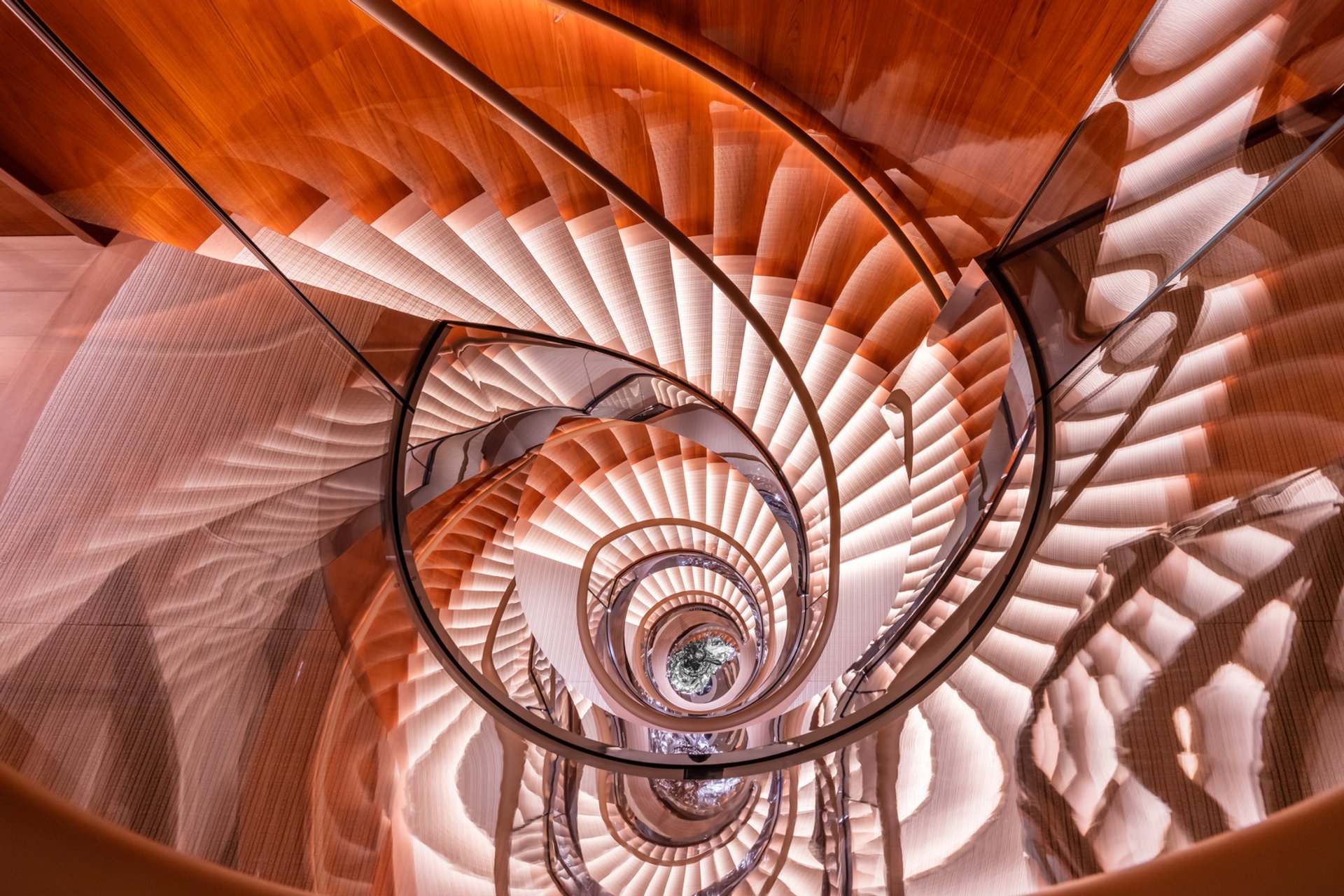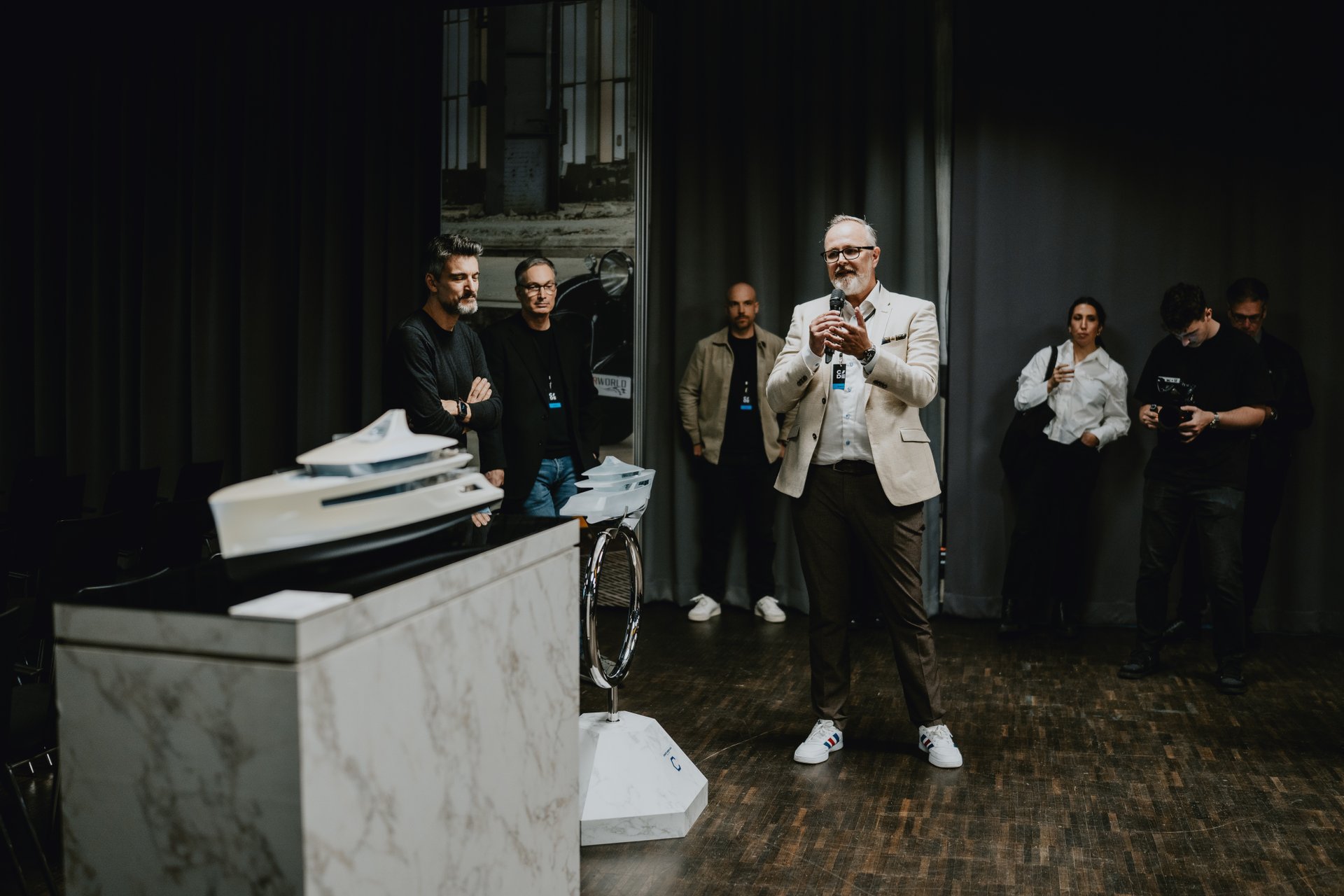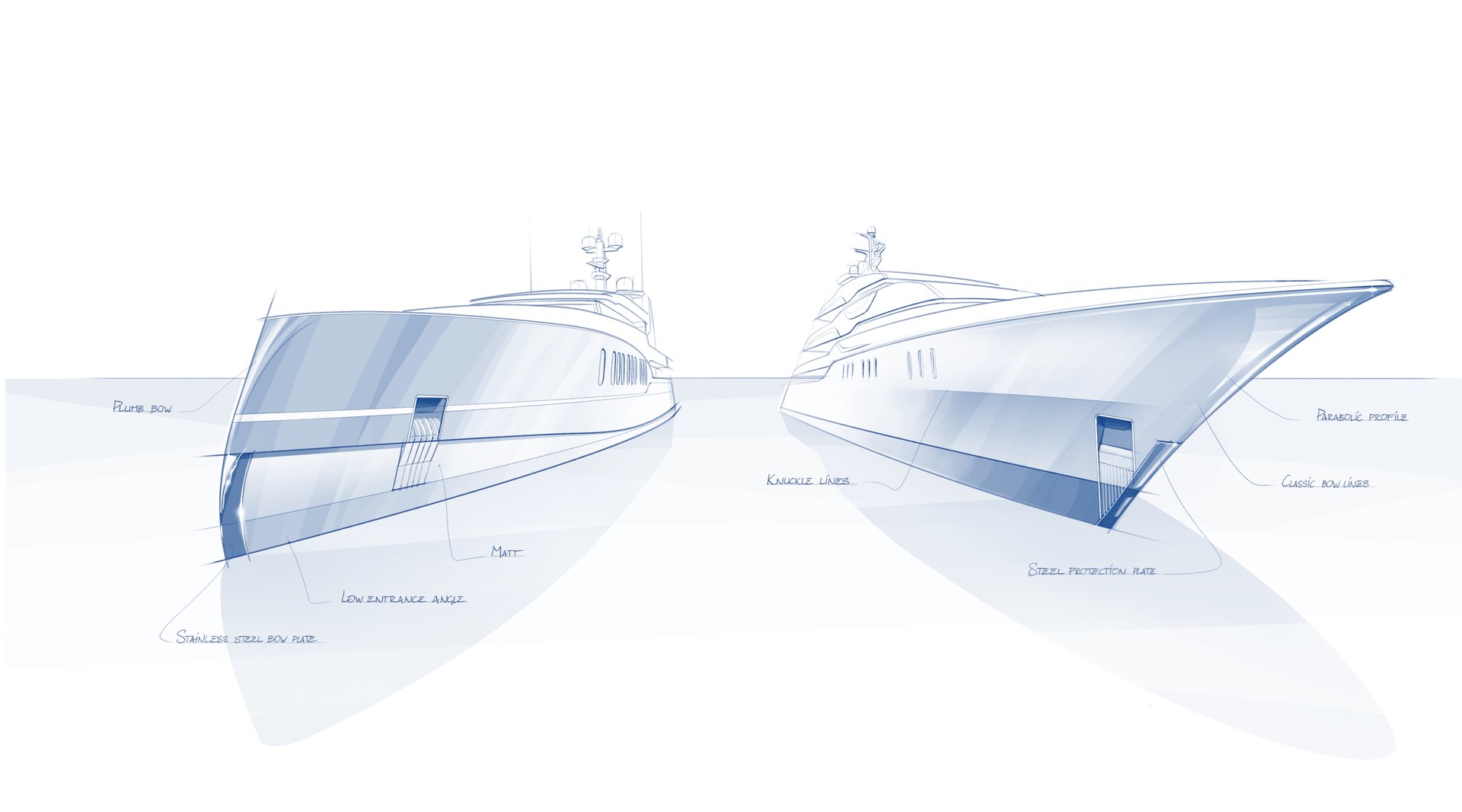When the designers at Studio De Voogt began crystalising their ideas for a new concept, they focused on dual foundations: exploring the best ways to deliver a remarkable experience at sea, and making the yacht futureproof in terms of propulsion. The first element rests on designing a yacht for dynamic people searching for a unique, no-compromise approach to a trending carefree lifestyle. The second displays the direction of technical R&D from Feadship De Voogt Naval Architects.
But first, the lifestyle. This concept yacht imagines owners who delight in al fresco living, elegant lines founded on simplicity, and a platform optimised for celebrating beautiful surroundings. The designers had in mind people more interested in collecting experiences than things, owners with the boldest visions, ready to reimagine the superyacht world.
Radical ideas
The Studio De Voogt team listed the most common design requests: water access, beach clubs, spaces that blend indoors and out, room for a large group but also intimate corners, multi-level spaces full of light, privacy in port, hidden stowage for large tenders, indulgent spas, breezy terraces, easy transitions between decks, smart circulation for excellent crew service, sleek lines and a forward-facing primary stateroom. The integration of these last three requests would seem to create a conundrum. But, in fact, resolving the conflict between sleek, low profile lines, an owner’s forward stateroom, and discrete crew areas led to the Pure design breakthrough. This bold concept rejects compromise with out-of-the-box solutions, asymmetry, the ultimate in fluidity between spaces, and one supremely radical idea – abandoning the typical wheelhouse.
Since the first Feadship Future Concept was unveiled in 2006, the goal has been to inspire the next generation of owners. With Pure, the designers implemented solutions based on technology that wasn’t even available during the first decade of concepts. Yet, as futuristic as Pure looks, construction could start tomorrow.
Designer Jan Schaffers explains the core engineering: “The technical keys to making the design work are two central structural elements around which the rest of the yacht would be built. It's similar to how office towers have large elevator and stair shafts at their core. These structural components also anchor the main deck bar (port) and main staircase (starboard), serve as the fire and mandatory equipment zones, incorporate fresh air and exhaust casings, and offer discrete crew routing.”
Feadship has demonstrated remarkable prowess in installing giant slabs of glass as part of exterior structure. Pure does the same with the interior, with glass becoming an aspect of the space.
Located half inside, half out, an impressive elliptical glass atrium connects all lines of sight across three decks, adding to the sense of relationship with each other and the environment.
“Exceptional views are available from wherever you stand, along with a sense of wonder about how the spaces work. It stimulates you to explore,” said Schaffers.
“We were determined to adjust every angle to perfection.” Jan Schaffers
Ah, but how to marry the requests for openness at anchor with the need for privacy in popular ports? Knowing layers of fabric window coverings would run counter to the essence of the design, the concept bakes a ceramic concoction called frit in patterns on the exterior glass surfaces. Dark on the inside like a tinted window – those on board can see out – the colour baked on the totally flush glass outside matches the hull and appears opaque. The windows are virtually indistinguishable from the outside unless you are very close.
Spellbinding
It takes tremendous design and engineering to make something so complex look as minimalist as Pure’s muscular profile. The simple lines and some highly finessed twisted surfaces generate an air of calm, merging seamlessly with the volumes. Bram Jongepier, a senior specialist at De Voogt, noted that when approaching Pure’s stripped-back exterior, guests will be unsure how large the yacht is, further enhancing the magic when they discover the spellbinding space that lies within this 81.75-metre, five-deck yacht.
Borrowing an idea from the Royale concept that debuted in 2017, a three-story atrium greets guests arriving at the main deck, not in some narrow interior stairway, but dramatically wrapping around the swimming pool at the stern. Sunlight streams from an open oval in the sundeck, cascades through an oval in the owner's deck terrace and warms the swimming pool below. And that light continues through the glass floor and walls of the pool, bringing light to the spa on the deck below.
Following requests, an expansive primary suite is in a premium position forward on the upper deck. A private Jacuzzi nestles into the raised foredeck, offering a perfect haven for the owners.
Concealed Command Centre
Pure does not have a bridge deck. If the deck above main is the owners’, and the forward main deck is a garage, where is the wheelhouse? There isn’t one. The yacht is controlled from a concealed Command Centre in one of the best places on the ship — low, just slightly forward of amidships and conveniently adjacent to crew quarters and mechanical spaces. All the information needed to operate Pure is simulated and displayed on screens. The information will come from sources such as radar, AIS, maps, depth sounders and cameras placed around the yacht. This data is all combined via artificial intelligence, then presented using innovative augmented reality visualisation.
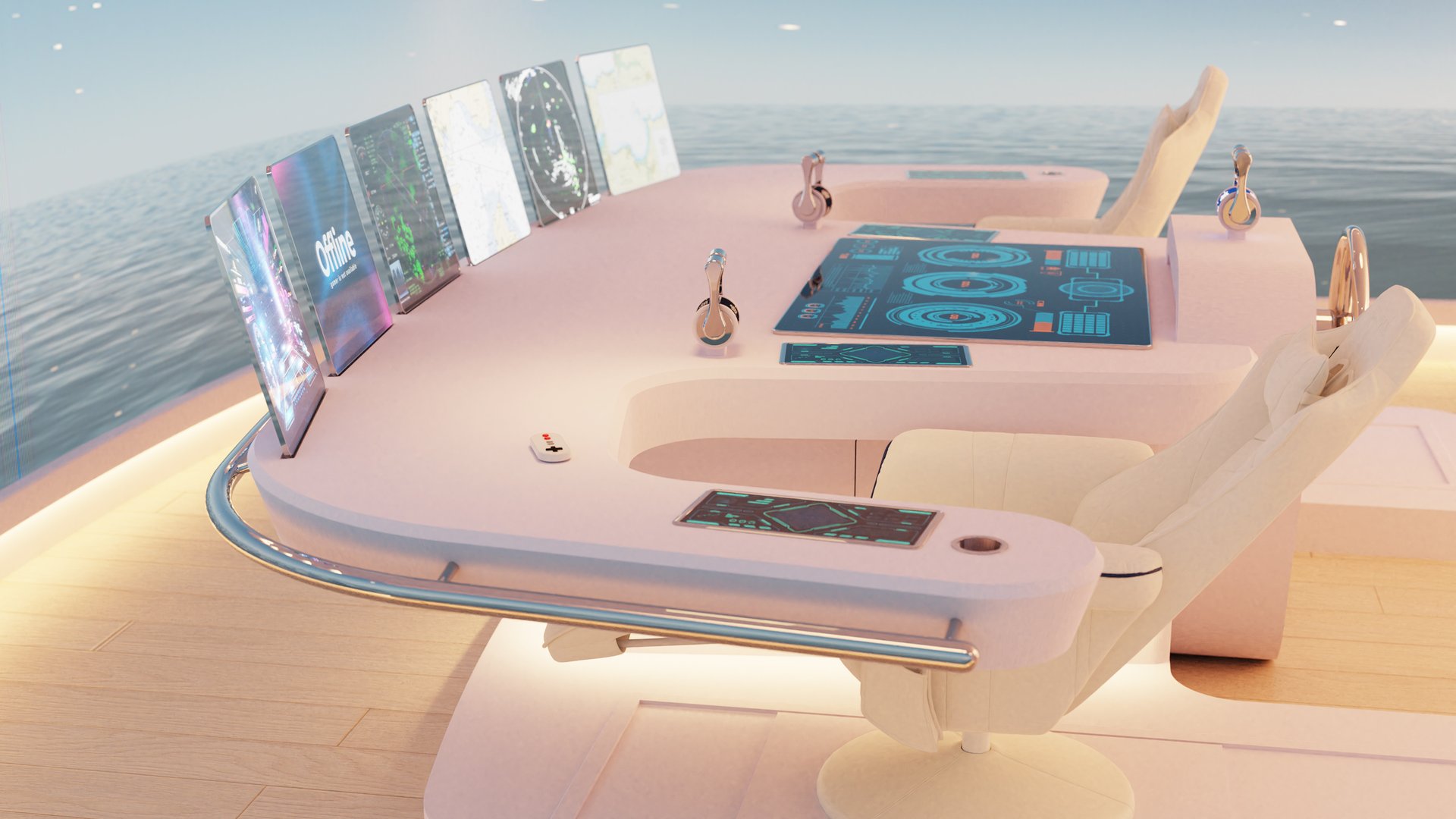

The Feadship Foresight programme provides further assistance to the captain and crew regarding situational awareness, motion prediction, routing, onboard comfort and finding the most fuel-efficient way to travel between locations. As sci-fi as it sounds, this is already operating aboard commercial and military ships. The De Voogt Design Studio has drawn Pure with a Command Centre facing a curved video screen showing not only the surroundings in real-time, but as if they were wearing google glasses, the crew will see information overlays. Touch screen controls, like any cutting-edge bridge today, allow the crew to monitor and control any function. Of course, as a backup and for close quarters manoeuvring, stairs connect directly to wing controls on the owners’ deck, with another concealed helm station on the sun deck.
“We recognise that the Command Centre is a controversial proposal, but such solutions are already common on subs and naval vessels and in all maritime training centres,” says Jongepier. “Many owners prefer a forward-facing stateroom with panoramic views in the place where a wheelhouse is normally. Raising the bridge higher impacts the profile and stability.”
Future proof propulsion system
But it's not just about reimagining lifestyle; Pure’s propulsion system is future proof, meaning it is devised to cover new engine emission regulations and fuel developments likely arising during the next decade, with tank deck compartments ready to be adapted. It is based on user profiles with the design and subsequent refit options assessed using the Yacht Environmental Transparency Index (YETI) tooling, giving an insight into overall efficiency, fuel consumption, shore power use and the annual emissions impact.
Pure is an energy hybrid, with diesel-electric propulsion receiving energy from batteries and some form of liquid fuel. Three scenarios are envisaged for a Pure-like Feadship: the initial delivery in 2024 and upgrades in 2027 and 2030, respectively.
The launch version of Pure would be a diesel-electric hybrid with the battery pack and generators running on fossil or renewable diesel. The market for renewable diesel is developing and expected to be a viable alternative in three to five years.
Fast forward three years, and technology should allow a hybrid of battery packs charged by generators running on methanol. Feadship expects type-approved methanol engines to be available within a couple of years, along with conversion kits and dual fuel engines capable of running on either diesel or methanol. Although the reduced energy density of methanol decreases range by 50 per cent, fuel production and lower emissions will have a significant positive effect on the yacht’s environmental impact.
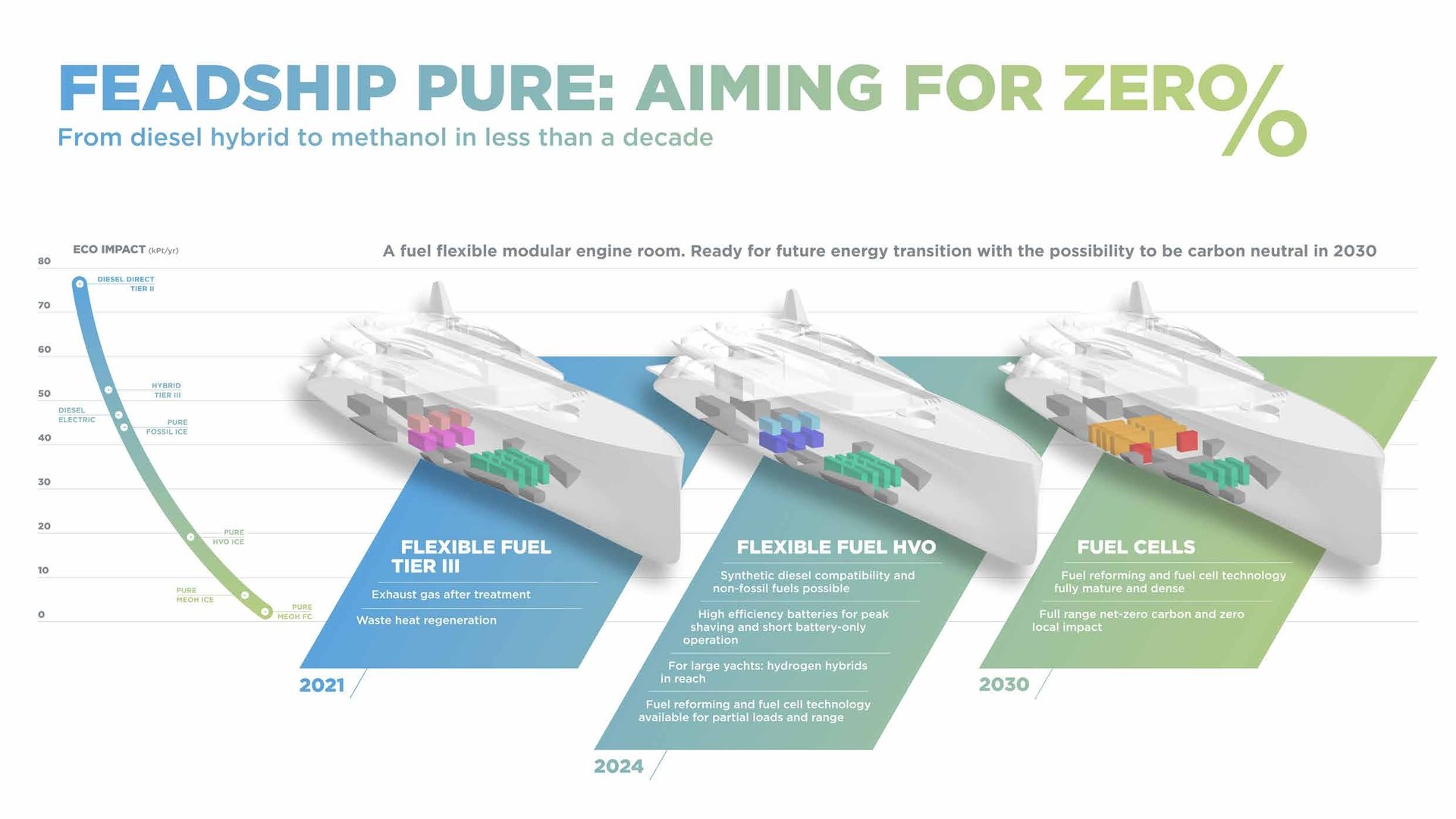

Pure 2030 will feature all-methanol fuel cells with batteries for plug-in functionality. Proton Exchange Membrane (PEM) fuel cells are available on the market together with methanol reformers, although not yet at a higher overall efficiency level than diesel engines. Feadship is working with suppliers to develop solid oxide fuel cells coupled with adapted methanol reformers. These cells have higher efficiency, and the adapted reformer leads to lower losses, improving overall efficiency. The range of this version of Pure is likely be around 5,000nm, a normal range for an 80-metre Feadship.
Designer Tanno Weeda notes that the studio has created plans for the Pure concept in several sizes, however, he believes the concealed bridge idea will have the most significant impact on owners wanting their yacht to remain below 500GT.


